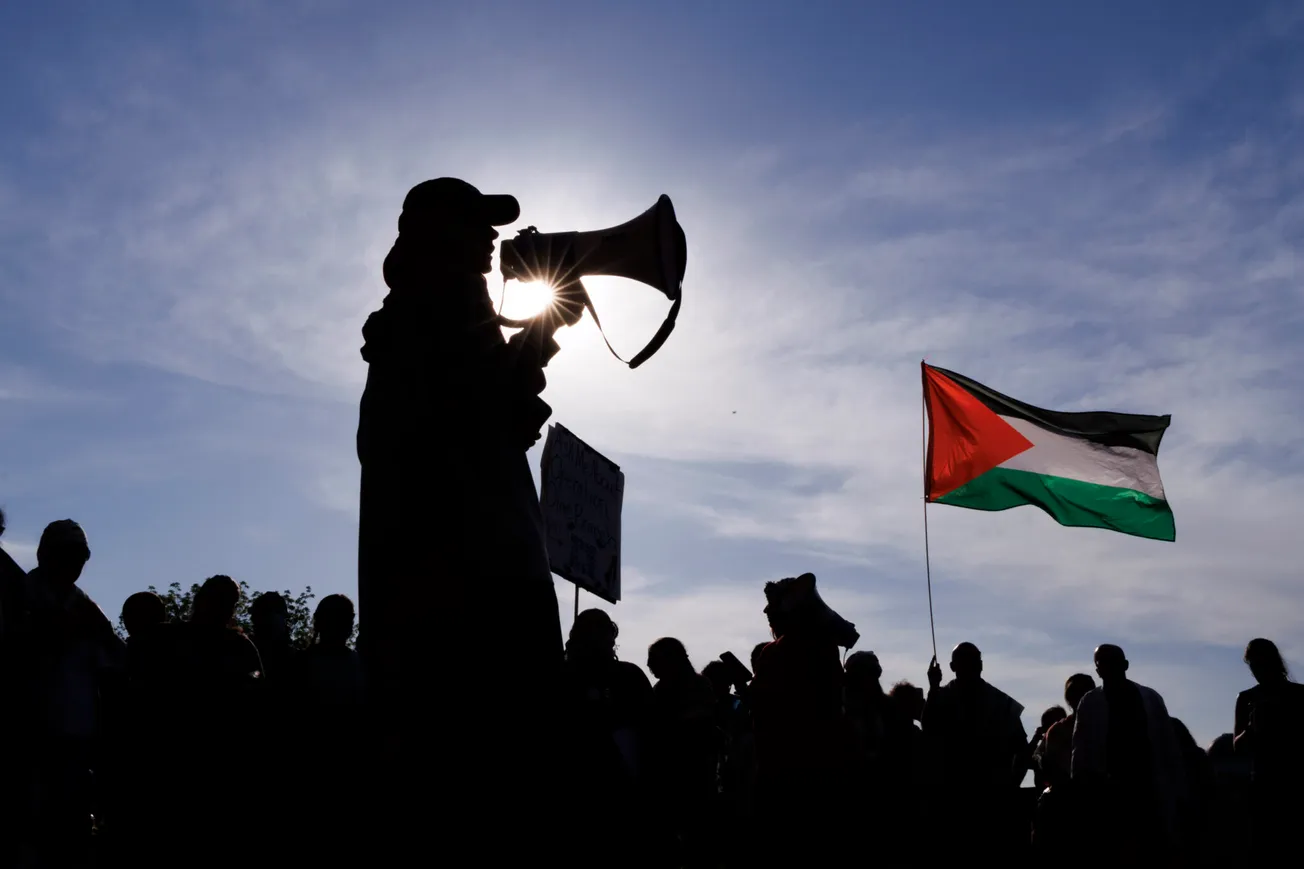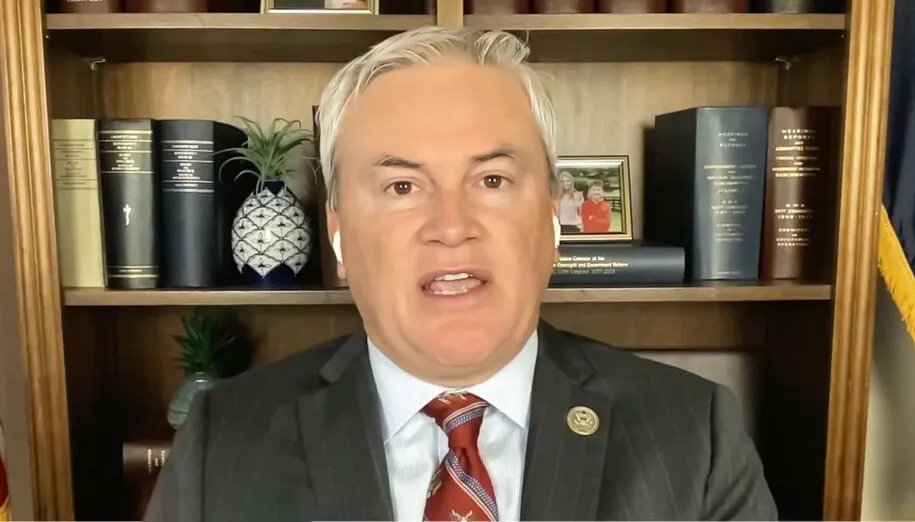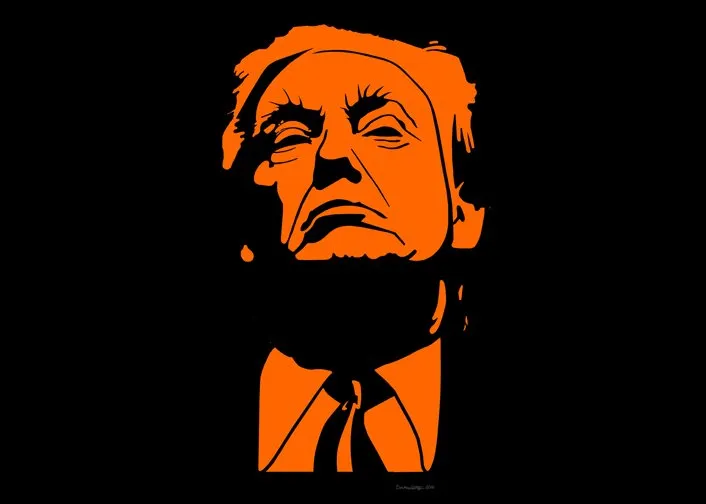Activism on behalf of Gaza’s Palestinian population made its way to Lexington last week, in the form of a rally near the University of Kentucky’s main library.
The modest crowd, estimated to number under 300, engaged in no violence, no vandalism, and no threatening behavior. No one faced arrest, nor did counter protestors accost them.
Rather than camping out indefinitely on the lawn, with all of the property damage such an encampment entails, participants communicated their message, then disbanded within a couple of hours — preventing no one else from enjoying use of campus (whether for learning, leisure or anything in between).
My description of the UK rally sounds extraordinary, compared to what’s appeared in the news and over social media about protest activity elsewhere. But it isn’t. It describes, more or less, what’s occurred in most communities where activists have sought to soften the U.S. government’s pro-Israel policies.
What’s extraordinary are the destructive (if not violent) protests that have taken place at a handful of elite institutions. Those isolated incidents loom large in the public’s mind because of biases in how information reaches us.
The camera lies
People tend to believe what they see, but because no device can capture everything taking place everywhere at every time, the camera necessarily lies.
At first blush, it might seem as though audiences are less vulnerable to manipulation than they used to be.
We no longer require a well-positioned camera crew — with lights blazing and film rolling — to see political events. Citizens now walk around with high-resolution cameras embedded in their smartphones. When something big happens, amateur videographers record it.
Nor are audiences dependent on what media organizations consider newsworthy. Almost anyone can be an amateur news producer thanks to social-media apps.
Nevertheless, we still witness political events secondhand, after filters determine which images reach our gaze. And political strategists know how to exploit those filters to create propaganda.
Preparing a presidential address, for example, might seem a simple matter of speechwriting. But viewers process images as well as words. A president’s handlers know that remote audiences will see everything in the camera frame, but nothing outside of that rectangle. So ample planning goes into shaping a speech’s backdrop. An “advance team” will populate the stage with loyalists who shout, clap, and wave flags. That entourage might be diverse, or instead heavy on laborers or soldiers, depending on the message the White House hopes to convey.
Image manipulation isn’t restricted to national politics. When Gov. Andy Beshear spoke at Kentucky’s fabled Fancy Farm last year, he didn’t arrive with just his wife and a memorized speech. Instead, to highlight Beshear’s popularity, Democrats trucked in a small army of activists from Lexington and Louisville. Their team wore matching T-shirts to stand out visually, with scripted cheers to stand out audibly. To ensure their visibility, team leaders (communicating over walkie-talkies) shepherded the student activists around the picnic grounds.
Protests rely on image creation and manipulation more than most forms of political activity. The challenge faced by protestors is to do something odd or disruptive — hoping to wake a dormant public — yet to do it in a way that wins sympathy and tilts the balance of power their way.
Orchestrating disruptive behavior has become easier with the proliferation of consumer electronics. Campus organizers can order materials, like tents and locks, online in bulk to support a demonstration. They can summon outsiders to bulk up their numbers or donate supplies.
Once organizers generate video that makes their cause look popular, social-media apps distribute the publicity to a wider audience. It can become a “trending” topic, so that social-media users are fed a steady diet of related content, amplifying the protest’s apparent scope and significance.
What’s harder for organizers to do is control messaging.
Like the traditional journalists they supplanted, online content generators carve up reality into bite-sized pieces of news. These news events — what one historian called “pseudo-events” — usually emphasize the angry, the ugly, the scary, the extreme.
With so many cameras roving around, risk is high that protestors (and counter protestors) will reveal their ignorance, their intolerance, their sense of privilege, their violence, maybe even their murderous impulses.
Such content “goes viral” and squanders sympathy.
An impression of prevailing violence
It’s easier than ever for activists to attract attention, but harder to ensure the attention is positive. We see both biases at work with anti-Israel protests supposedly “sweeping” American universities.
The “campus unrest” storyline exaggerates the turmoil, giving an inflated impression of both how dangerous campuses have become and how many students prioritize Middle Eastern politics.
At some elite universities, malevolent actors have exploited the discord as an excuse to unleash hateful impulses – including antisemitism (which Jewish Americans have good reason to fear).
Cameras zoom in on those protestors, especially violent or outlandish ones, ignoring what most students are doing outside the frame.
Berkeley’s oft-discussed pro-Palestinian encampment, for example, amounts to a relatively small group that’s erected tents in front of one administration building. Off camera, Berkeley undergrads go about their days much as they did last year: working, studying, socializing, and consuming.
Strolling Berkeley’s campus recently, after end-of-semester partying, what I saw sweeping the campus was litter, not radicalism. A visitor to Berkeley this Saturday would have found more students on stage performing Stravinsky’s “Rite of Spring” than in the Spring protest camp.
Outside of such elite institutions, radical politics is an even lower priority.
In the days before UK’s rally, I noticed I hadn’t seen anything from the Bluegrass in a while, so I searched Twitter/X for “Kentucky.”
And it became immediately apparent that online Kentuckians weren’t focused on politics, Middle Eastern or otherwise. They were focused on their religion — by which I mean, of course, basketball. I had to wade through dozens of posts debating UK’s new coach before I finally found a tweet related to anything else.
No surprise that UK’s rally attracted modest participation.
Kentucky isn’t unique in this respect. Professors at other state schools have sought to convey the same message, including political scientists at institutions such as Illinois and Texas A&M. A Louisiana Tech historian asked his students if they were following the Columbia University protests; they “looked at me like I had nine heads.”
Bad news for Biden?
For politically aware Americans right now, campus unrest — as framed visually by cameras and rhetorically by social-media influencers — appears to be what literally everybody is doing or talking about.
Neither conservatives nor progressives want you to hear that campus unrest is more isolated than it seems.
Conservatives don’t want you to hear it because any perception university people are going crazy supports their narratives.
Progressives don’t want you to hear it because they sympathize with student activists — they want to believe protest is widespread — and, well, they’re out of touch and don’t realize how much campus unrest helps the right.
Such conflict within the Democratic Party’s core constituency would be bad news for President Biden, who’s already struggling with swing voters.
The good news is, the whole world isn’t really watching.
And by the time the general election kicks in, campus radicals no longer will be disrupting graduation ceremonies. They’ll likely have drifted off to summer break.

--30--
Written by Dr. Stephen Voss, n associate professor of political science at the University of Kentucky. Cross-posted from the Kentucky Lantern.
Comments








